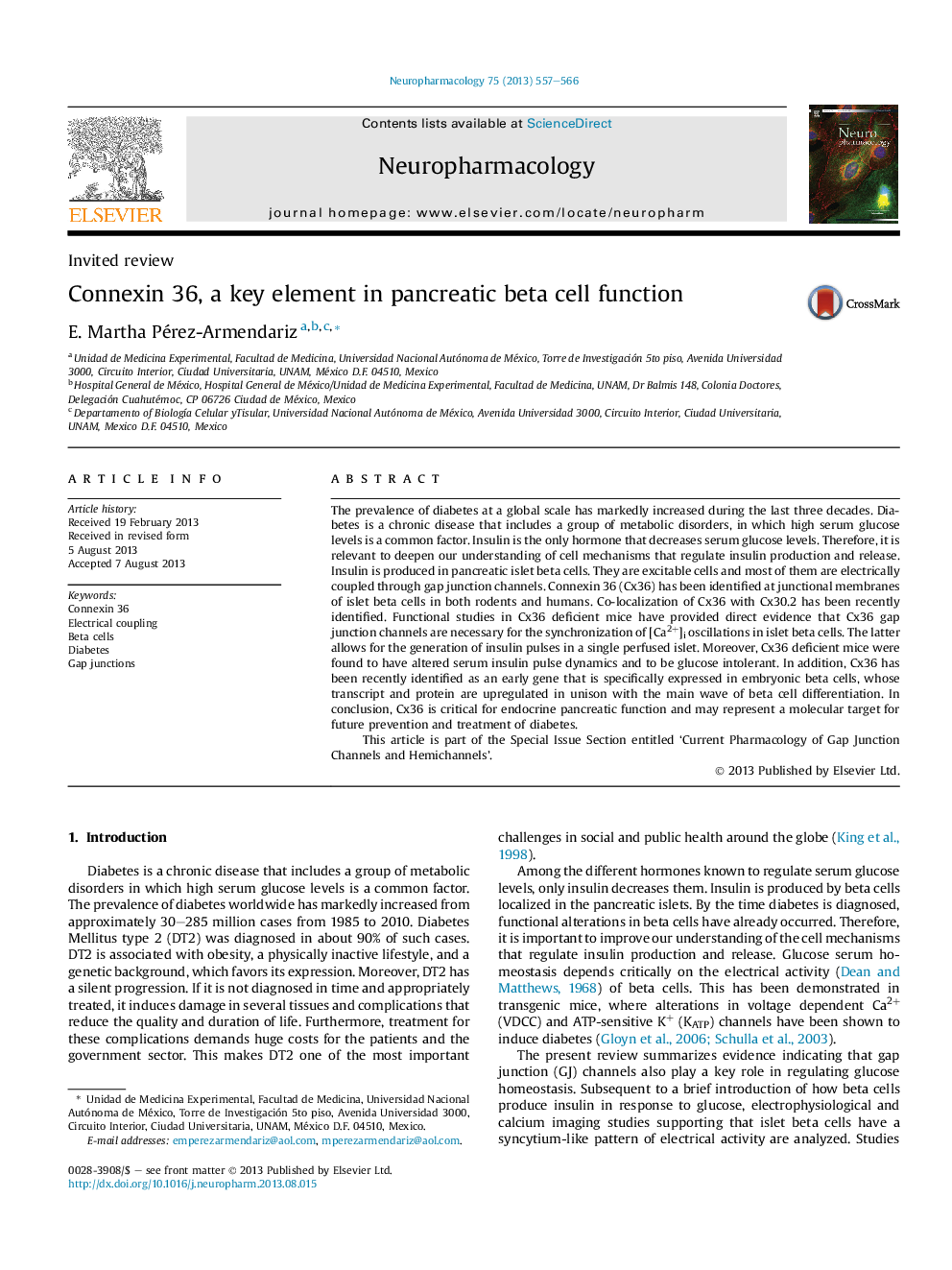| Article ID | Journal | Published Year | Pages | File Type |
|---|---|---|---|---|
| 2493331 | Neuropharmacology | 2013 | 10 Pages |
•Connexin 36 (Cx36) and Cx30.2 are expressed in pancreatic islet beta cells.•Loss of Cx36 prevents the generation of pulses of insulin release in a single islet.•Cx36 deficient mice have altered serum insulin oscillations and are glucose intolerant.•Cx36 protects against cell damage and may play a role in beta cell differentiation.•Cx36 plays a key role in pancreatic beta cell function.
The prevalence of diabetes at a global scale has markedly increased during the last three decades. Diabetes is a chronic disease that includes a group of metabolic disorders, in which high serum glucose levels is a common factor. Insulin is the only hormone that decreases serum glucose levels. Therefore, it is relevant to deepen our understanding of cell mechanisms that regulate insulin production and release. Insulin is produced in pancreatic islet beta cells. They are excitable cells and most of them are electrically coupled through gap junction channels. Connexin 36 (Cx36) has been identified at junctional membranes of islet beta cells in both rodents and humans. Co-localization of Cx36 with Cx30.2 has been recently identified. Functional studies in Cx36 deficient mice have provided direct evidence that Cx36 gap junction channels are necessary for the synchronization of [Ca2+]i oscillations in islet beta cells. The latter allows for the generation of insulin pulses in a single perfused islet. Moreover, Cx36 deficient mice were found to have altered serum insulin pulse dynamics and to be glucose intolerant. In addition, Cx36 has been recently identified as an early gene that is specifically expressed in embryonic beta cells, whose transcript and protein are upregulated in unison with the main wave of beta cell differentiation. In conclusion, Cx36 is critical for endocrine pancreatic function and may represent a molecular target for future prevention and treatment of diabetes.This article is part of the Special Issue Section entitled ‘Current Pharmacology of Gap Junction Channels and Hemichannels’.
